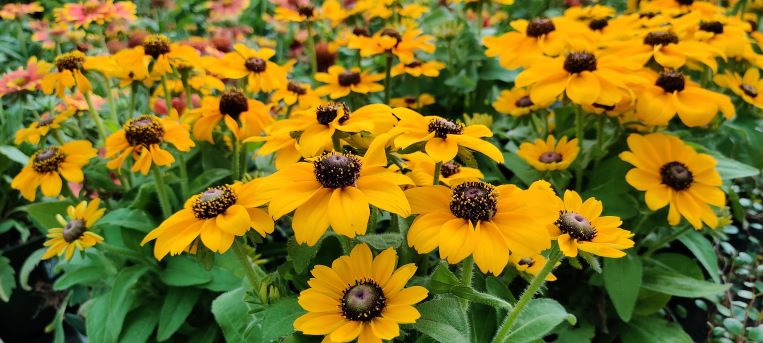
Rudbeckia is a beautiful perennial ornamental plant belonging to the Asteraceae family .
Native to eastern North America, very widespread thanks to the prolonged flowering from June to September and the ease with which it grows. In fact, it is a biennial plant that produces itself.
It can reach heights of 1 meter or more, its rhizomatous root system is full of thin, very branched stems, covered with lanceolate and rough leaves, of medium green color.
The flowers of the Rudbeckia are very similar to those of the daisy, its petals are deep yellow and the central part of the flower can vary from dark brown to light green.
Very easy to grow, ideal for those who aspire to a lush and colorful garden but have little time available.
Rudbeckia is perfect for embellishing terraces and gardens.
The varieties of Rudbeckia
In nature there are about 40 varieties of Rudbeckia. The best known are:
Rudbeckia Hirta;
Rudbeckia Fulgida;
Rudbeckia Maxima;
Rudbeckia Berlin;
Rudbeckia Purpurea.
How to grow Rudbeckia
Exposure : it prefers bright and sunny exposures to bloom luxuriantly.
Minimum temperature: -15, it is a cold resistant plant.
Soil : rich in organic substances and well drained.
Watering : Water regularly only when the soil is completely dry from spring to autumn.
Fertilization : use a liquid fertilizer for garden plants and flowers every 15 days, or at the beginning of spring with a slow release universal granular fertilizer .
Problems and remedies
This seemingly delicate plant is very resistant to fungal diseases and rarely attacked by pests.
The main cause of problems is excessive humidity, which is why it needs well-draining soil.
Curiosity
- Rudbeckia 's name comes from the Swedish botanist Olaf Rudbeck.
- The first species were imported to the European continent around 1640.
- In the language of flowers, rudbeckia is a symbol of longevity and happiness.
